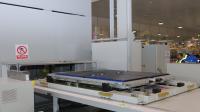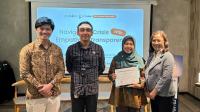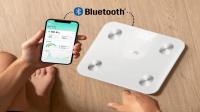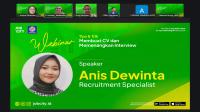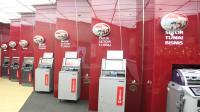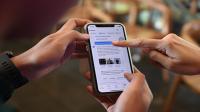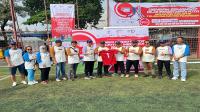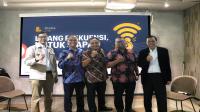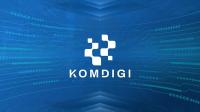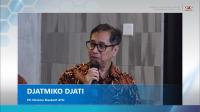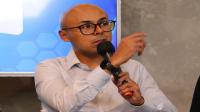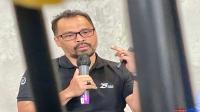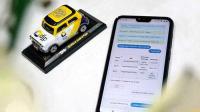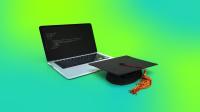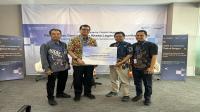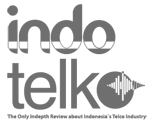3 million patients remotely monitored
13:03:27 | 30 Jun 2014

Ilustrasi (Dok)
GOTHENBURG (IndoTelko) - According to a new research report from the analyst firm Berg Insight, around 3 million patients worldwide were using connected home medical monitoring devices at the end of 2013.
This figure comprises all patients that were remotely monitored by a professional caregiver. Patients that use connected medical devices for personal health tracking are not included in this figure.
Until 2018, Berg Insight estimates that the number of patients using connected home medical monitoring devices will grow at a compound annual growth rate (CAGR) of 44.4 percent to 19.1 million.
The main application is monitoring of patients with implantable cardiac rhythm management (CRM) devices, which with 2 million connections accounted for nearly two thirds of all connected home medical monitoring devices in 2013.
Sleep therapy and telehealth are the second and third largest segments with 0.54 million and 0.34 million connections respectively at the end of the year. All other device categories – including ECG, glucose level, medication adherence, blood pressure, air flow, home sleep tests, blood oxygen and coagulation monitoring – stood for less than 0.1 million connections each. Berg Insight expects that CRM will remain the single largest device segment throughout the forecast period, growing at a CAGR of 15.1 percent to 4.0 million connections by 2018. However, the CRM segment will account for just 21 percent of all connections in 2018, down from 65 percent in 2013, as the use of connectivity is growing faster in other device segments. Today, more than 70 percent of all connected medical devices rely on PSTN or LAN connectivity for transmitting measurement data to caregivers. However, cellular connectivity has become the most common technology in new medical devices and is forecasted to account for 74 percent of all connections by 2018. A third alternative is that patients use their own mobile devices as health hubs. The bring your own device (BYOD) model can in theory be very cost-efficient as no dedicated hardware or subscriptions are needed, but accounted for less than one percent of all connections in 2013. “It is currently more common that caregivers provide a dedicated tablet or smartphone to a patient for remote monitoring than that a patient uses her own device. The main limitation is in the lack of interoperability between medical monitoring devices, smartphones and tablets” says Lars Kurkinen, Senior Analyst, Berg Insight. He adds that mHealth connectivity platforms such as 2net Mobile from Qualcomm Life and HealthKit from Apple are emerging as promising solutions and can allow BYOD health hubs to become the favoured alternative for several groups of patients such as diabetics and asthmatics. Revenues
Berg Insight estimates that revenues for remote patient monitoring (RPM) solutions reached € 4.3 billion in 2013, including revenues from medical monitoring devices, mHealth connectivity solutions, care delivery software platforms and monitoring services. RPM revenues are expected to grow at a CAGR of 35.0 percent between 2013 and 2018, reaching € 19.4 billion at the end of the forecast period. Savings attributable to payers and care providers will by far exceed this amount as connected care solutions can allow better health outcomes to be achieved more cost efficiently. The new care models enabled by these technologies are furthermore often consistent with patients’ preferences of living more healthy, active and independent lives. While the healthcare industry is advancing towards an age where connected care solutions will be part of standard practices, this progress is still far from uniform. “The growth in the remote patient monitoring market is today centred on very specific market verticals and regions. Most of the market growth in the sleep therapy segment has for instance occurred in the US and France, where frequent compliance audits are becoming more common” said Lars.
He adds that the telehealth market benefits from local and regional project financing in several European countries, whereas remotely monitored medication dispensers gain traction among home care providers in the Benelux and Nordic countries in particular.
In addition to this, the first pharmaceutical companies have recently initiated rollouts of connected adherence monitoring solutions that are bundled together with specific drugs. “Another high-level development that will have a major impact on the use of connected care solutions in several countries during the coming years is the shift from fee-for-service reimbursement systems to pay-for-performance structures that emphasize cost-effective delivery of quality care”, adds Mr Kurkinen.
In the US, one example of this development is the large number of RFPs for telehealth solutions that are being issued due to the hospital readmission reduction programs.(es)
Baca juga :
•
•
•
Sleep therapy and telehealth are the second and third largest segments with 0.54 million and 0.34 million connections respectively at the end of the year. All other device categories – including ECG, glucose level, medication adherence, blood pressure, air flow, home sleep tests, blood oxygen and coagulation monitoring – stood for less than 0.1 million connections each. Berg Insight expects that CRM will remain the single largest device segment throughout the forecast period, growing at a CAGR of 15.1 percent to 4.0 million connections by 2018. However, the CRM segment will account for just 21 percent of all connections in 2018, down from 65 percent in 2013, as the use of connectivity is growing faster in other device segments. Today, more than 70 percent of all connected medical devices rely on PSTN or LAN connectivity for transmitting measurement data to caregivers. However, cellular connectivity has become the most common technology in new medical devices and is forecasted to account for 74 percent of all connections by 2018. A third alternative is that patients use their own mobile devices as health hubs. The bring your own device (BYOD) model can in theory be very cost-efficient as no dedicated hardware or subscriptions are needed, but accounted for less than one percent of all connections in 2013. “It is currently more common that caregivers provide a dedicated tablet or smartphone to a patient for remote monitoring than that a patient uses her own device. The main limitation is in the lack of interoperability between medical monitoring devices, smartphones and tablets” says Lars Kurkinen, Senior Analyst, Berg Insight. He adds that mHealth connectivity platforms such as 2net Mobile from Qualcomm Life and HealthKit from Apple are emerging as promising solutions and can allow BYOD health hubs to become the favoured alternative for several groups of patients such as diabetics and asthmatics. Revenues
Berg Insight estimates that revenues for remote patient monitoring (RPM) solutions reached € 4.3 billion in 2013, including revenues from medical monitoring devices, mHealth connectivity solutions, care delivery software platforms and monitoring services. RPM revenues are expected to grow at a CAGR of 35.0 percent between 2013 and 2018, reaching € 19.4 billion at the end of the forecast period. Savings attributable to payers and care providers will by far exceed this amount as connected care solutions can allow better health outcomes to be achieved more cost efficiently. The new care models enabled by these technologies are furthermore often consistent with patients’ preferences of living more healthy, active and independent lives. While the healthcare industry is advancing towards an age where connected care solutions will be part of standard practices, this progress is still far from uniform. “The growth in the remote patient monitoring market is today centred on very specific market verticals and regions. Most of the market growth in the sleep therapy segment has for instance occurred in the US and France, where frequent compliance audits are becoming more common” said Lars.
Artikel Terkait
-
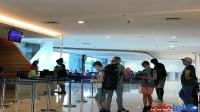 English Ver. - 04:06:00 | 25 Aug 2025The collaboration is designed to simplify complex payment processes for global travel businesses
English Ver. - 04:06:00 | 25 Aug 2025The collaboration is designed to simplify complex payment processes for global travel businesses -
 English Ver. - 04:07:00 | 11 Aug 2025Wireless Logic has completed the acquisition of Zipit Wireless
English Ver. - 04:07:00 | 11 Aug 2025Wireless Logic has completed the acquisition of Zipit Wireless -
 English Ver. - 05:00:00 | 27 Jul 2025JLL’s involvement included identifying and securing a site that met DAMAC’s technical and strategic requirements
English Ver. - 05:00:00 | 27 Jul 2025JLL’s involvement included identifying and securing a site that met DAMAC’s technical and strategic requirements
Rekomendasi
Berita Pilihan
More Stories
PR Newswire








.jpeg)
